Tiny but mighty: Garmin Forerunner 255S review
The petite Garmin Forerunner 255S packs a punch and, in fact, is the smallest full-featured triathlon watch you can buy today

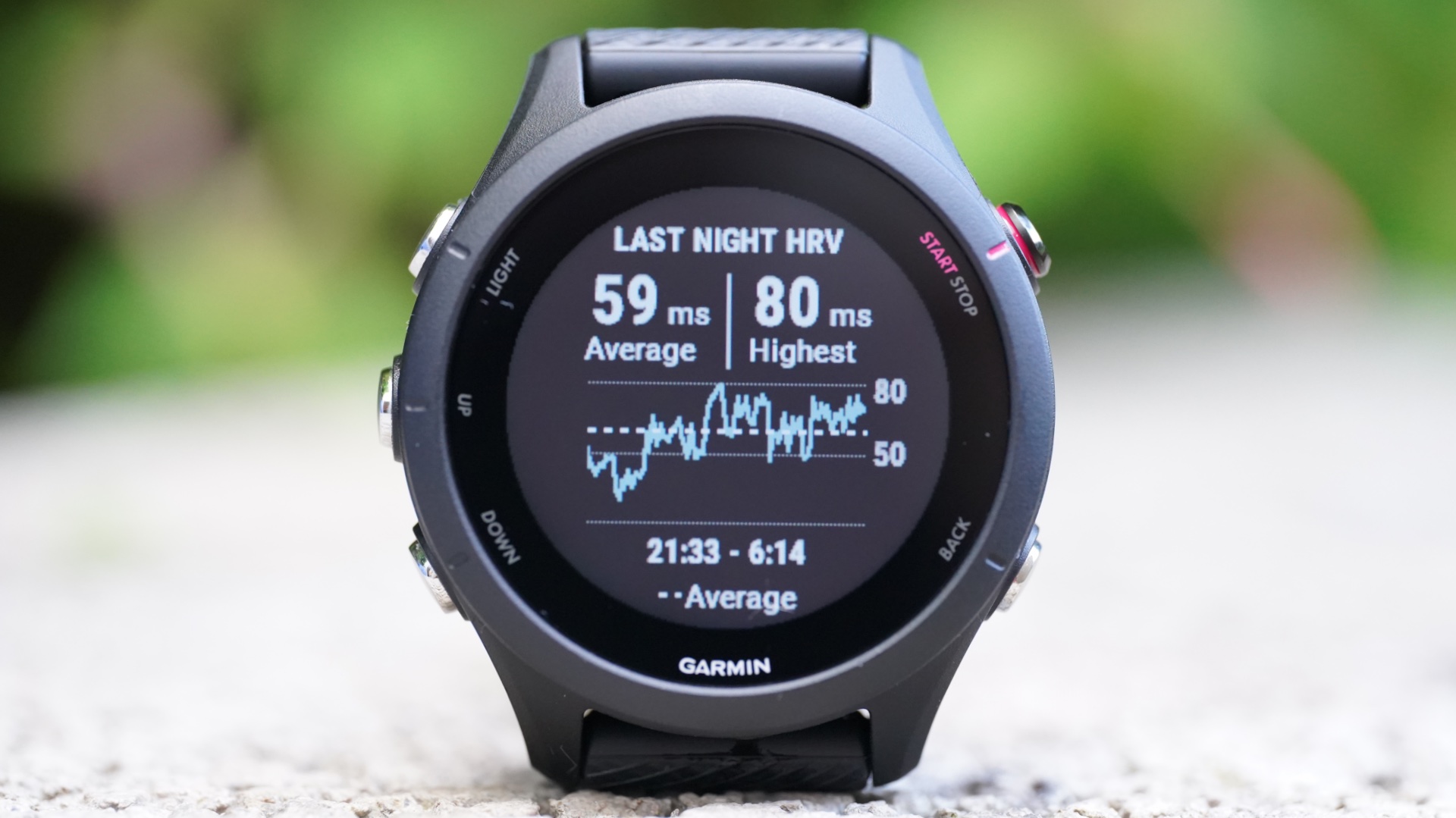
The Garmin Forerunner 255S is an important milestone in multisport watch evolution. It enables people with smaller wrists to get access to pro training and recovery features without compromising on heart rate accuracy due to the large watch not sitting correctly on the wrist. Well done, Garmin.
-
+
Triathlon mode added
-
+
New heart rate sensor
-
+
New multi-band GNSS support
-
+
Smallest multisport watch in the world (as far as I'm concerned)
-
+
Tracks heart rate variability
-
-
Would be nice to have an AMOLED option
-
-
No solar charging
-
-
You need an external sensor to measure running power
Why you can trust T3

Garmin Forerunner 255S review TL;DR: The smallest Forerunner comes with updated sensors and a GPS chip and adds full triathlon support – this isn't just a mid-range running watch anymore!
I was in awe of the compact size of the new Forerunner 255S when I first laid my eyes on the latest iteration of Garmin's mid-range watch. I really liked the Garmin Forerunner 245 – not to mention, it topped our best running watch guide for years – and was looking forward to discovering the new features of the Forerunner 255S.
I wasn't sure about the size, though: initially, I felt the 41 mm watch case might be too small for me. I love looking at as many data fields as possible, and the 1.1" MIP display didn't fill me with confidence that I'll be able to see more than a couple of metrics at the time.
However, the more time I spent with the Forerunner 255S, the more my appreciation grew: I started to see how much of a milestone this watch is for people with smaller wrists and how the new features made it so much more than just a running watch. As a matter of fact, if you have small wrists, the Garmin Forerunner 255S is the best triathlon watch you can get now. Enticed? Read on to find out more about this amazing Garmin watch.
[UPDATE 24/03/2023: We reviewed the latest iteration of this watch. Read my full Garmin Forerunner 265 review for more info.]
Garmin Forerunner 255S review: Price and availability
Available now at Garmin US, Garmin UK and Garmin AU, the Forerunner 255 and Forerunner 255S have a suggested retail price of $375/£300/AU$629. The Forerunner 255 Music and Forerunner 255S Music are also available now and have a suggested retail price of $440/£350/AU$699.
The Forerunner 245 (retailer link) is still available to buy – albeit only in one size – with prices from $300/£210/AU$500 (non-Music version).
Get all the latest news, reviews, deals and buying guides on gorgeous tech, home and active products from the T3 experts
To be able to use the Native Running Power feature on the watch (more on this below), you'll need either Garmin's Running Dynamics Pod or HRM-Pro heart rate monitor (both retailer links).
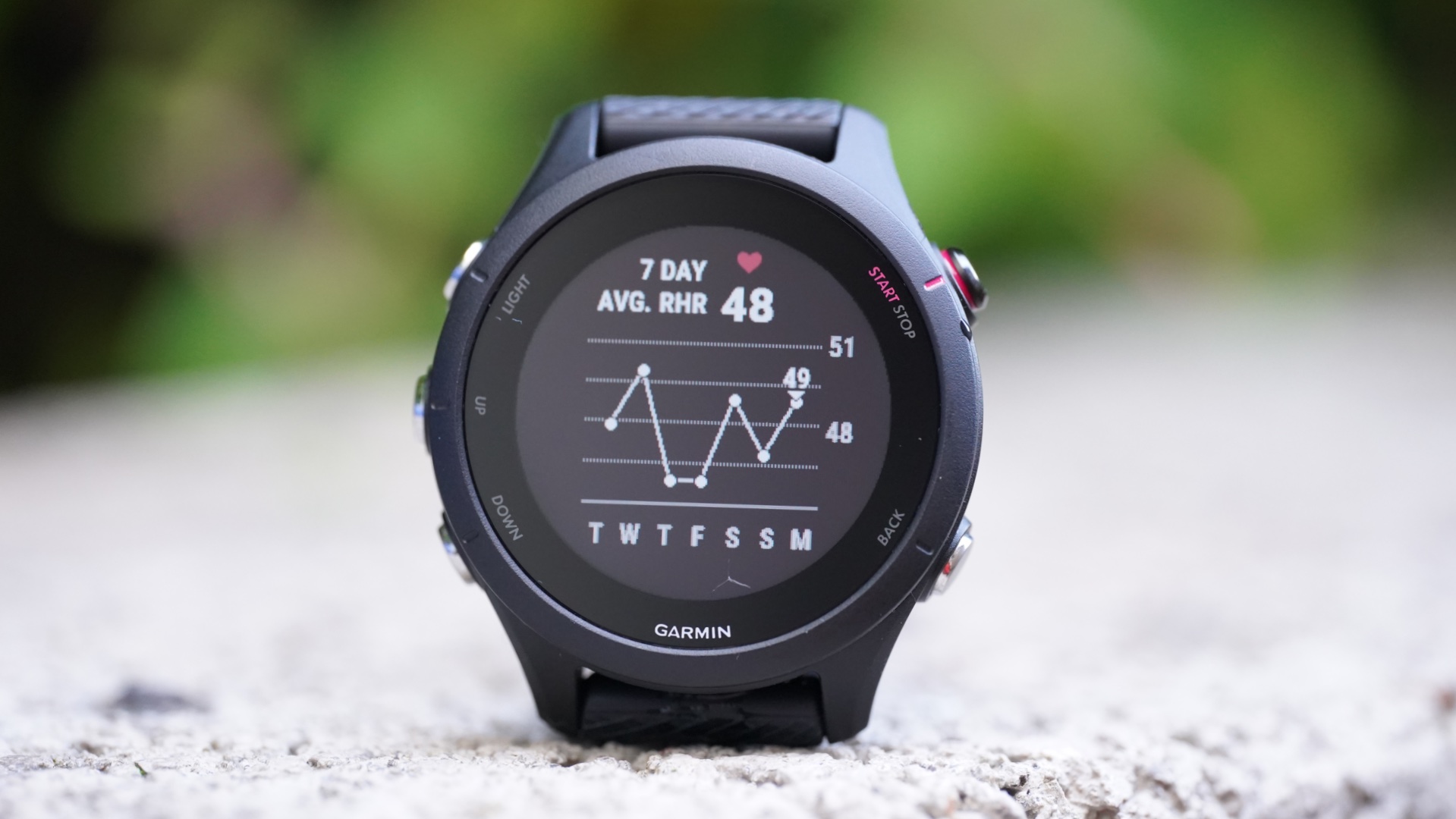
Garmin Forerunner 255S review: What's new?
In-depth: Garmin Forerunner 245 vs Forerunner 255 – Is it worth the upgrade?
One of the biggest differences between the Forerunner 245 and the Forerunner 255 is that the latter now comes in two sizes: the smaller 255S has a 41 mm watch case while the standard 255 has a 26 mm watch case.
Both versions have multi-band GNSS support (able to access multiple satellite systems simultaneously for better accuracy) and the latest Elevate optical heart rate sensor. The Forerunner 255 doesn't have an AMOLED option, nor does it have a touchscreen. Neither versions have solar charging.
From a features point of view, the new additions are:
- Morning Report – Allows you to receive the day's weather and daily workout suggestion, as well as information about last night's sleep and HRV status. You'll need a connection to your smartphone for the weather report, but sleep and HRV data are readily available on the watch without any external input.
- HRV Status – The watch tracks heart rate variability (HRV) while sleeping; it's a good indicator of how ready your body is to work out. HRV is the new thing in wearables and some fitness trackers, such as the Whoop 4.0, build their whole ecosystem around this one metric.
- Native Running Power – You need an external sensor like the Running Dynamics Pod or Garmin HRM-Pro to access this feature. Should you have one, you can receive real-time metrics of how much power is being exerted on a run.
- Race Widget – Allows you to see race prep information, including a race day-specific performance prediction, race day weather and a countdown clock. Once a race is scheduled in the Garmin Connect app, daily suggested workouts will adapt based on your race plans.
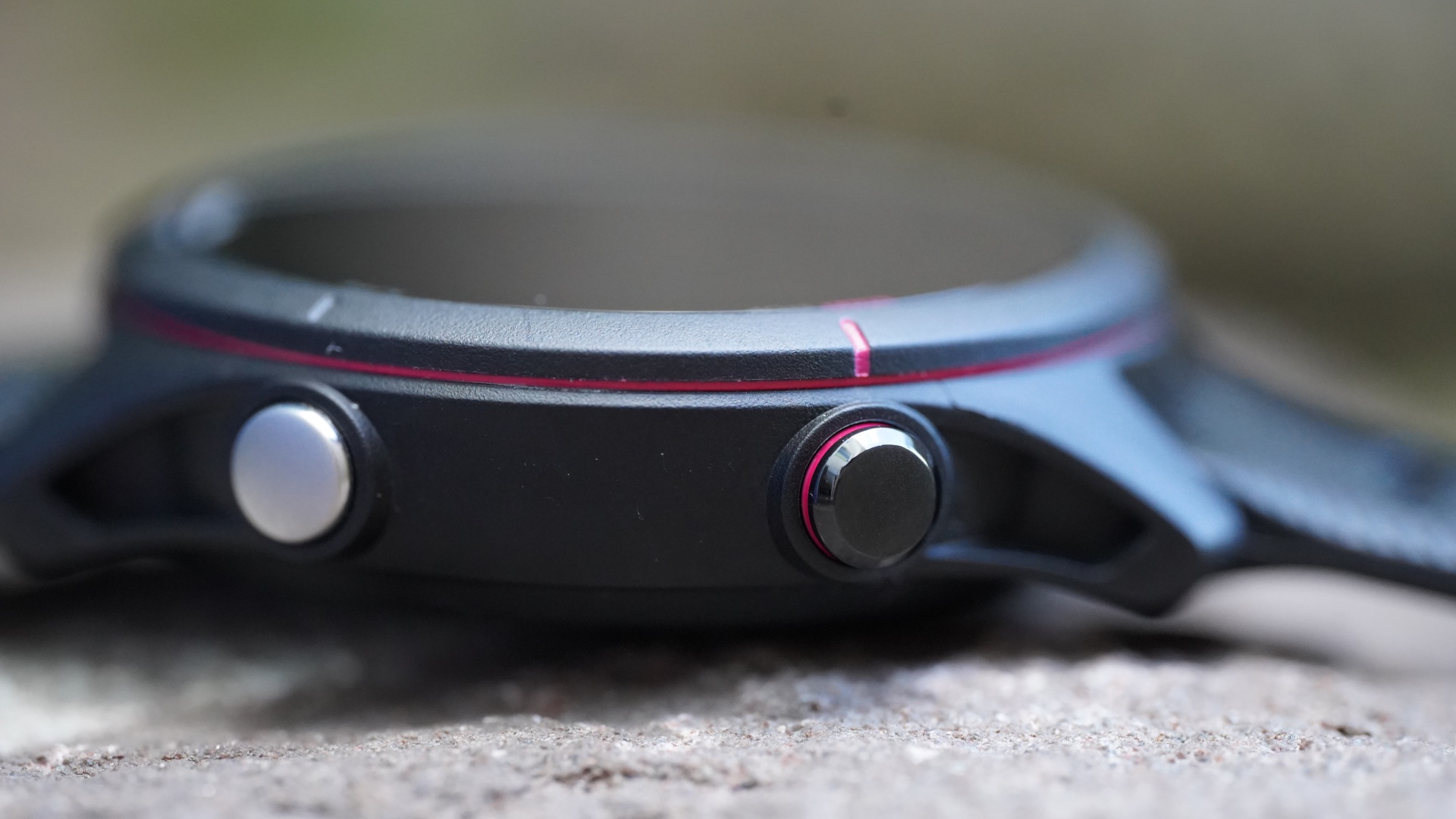
Garmin Forerunner 255S review: Physical design
The standard Forerunner 255 is bigger than the Forerunner 245 used to be, while the somewhat Forerunner 255S is smaller. The specs are compared below:
| Row 0 - Cell 0 | Watch case | Display size | Display resolution | Display type |
| Garmin Forerunner 245 | 42 mm | 1.2" (30 mm) | 240 x 240 pixels | Sunlight-visible, transflective memory-in-pixel (MIP) |
| Garmin Forerunner 255 | 46 mm | 1.3" (33 mm) | 260 x 260 pixels | Sunlight-visible, transflective memory-in-pixel (MIP) |
| Garmin Forerunner 255S | 41 mm | 1.1" (27 mm) | 218 x 218 pixels | Sunlight-visible, transflective memory-in-pixel (MIP) |
The watch has the standard 5-button layout with three buttons on the left edge of the watch case and two on the right. Sadly, no versions of the Garmin Forerunner 255 come with an AMOLED display, nor do they have the solar-harvesting Power Glass included – a shame, really, especially considering that other new Garmin watches feature at least one of these.
The lens, bezel and strap material haven't changed since the Forerunner 245: they are still Corning Gorilla Glass 3, fibre-reinforced polymer and silicone (respectively).
Interestingly, even the smaller Forerunner 255S is heavier than the Forerunner 245: the 255S weighs 39 grams while the 245 38.5 grams. In reality, you won't feel the difference – both versions are pretty light.
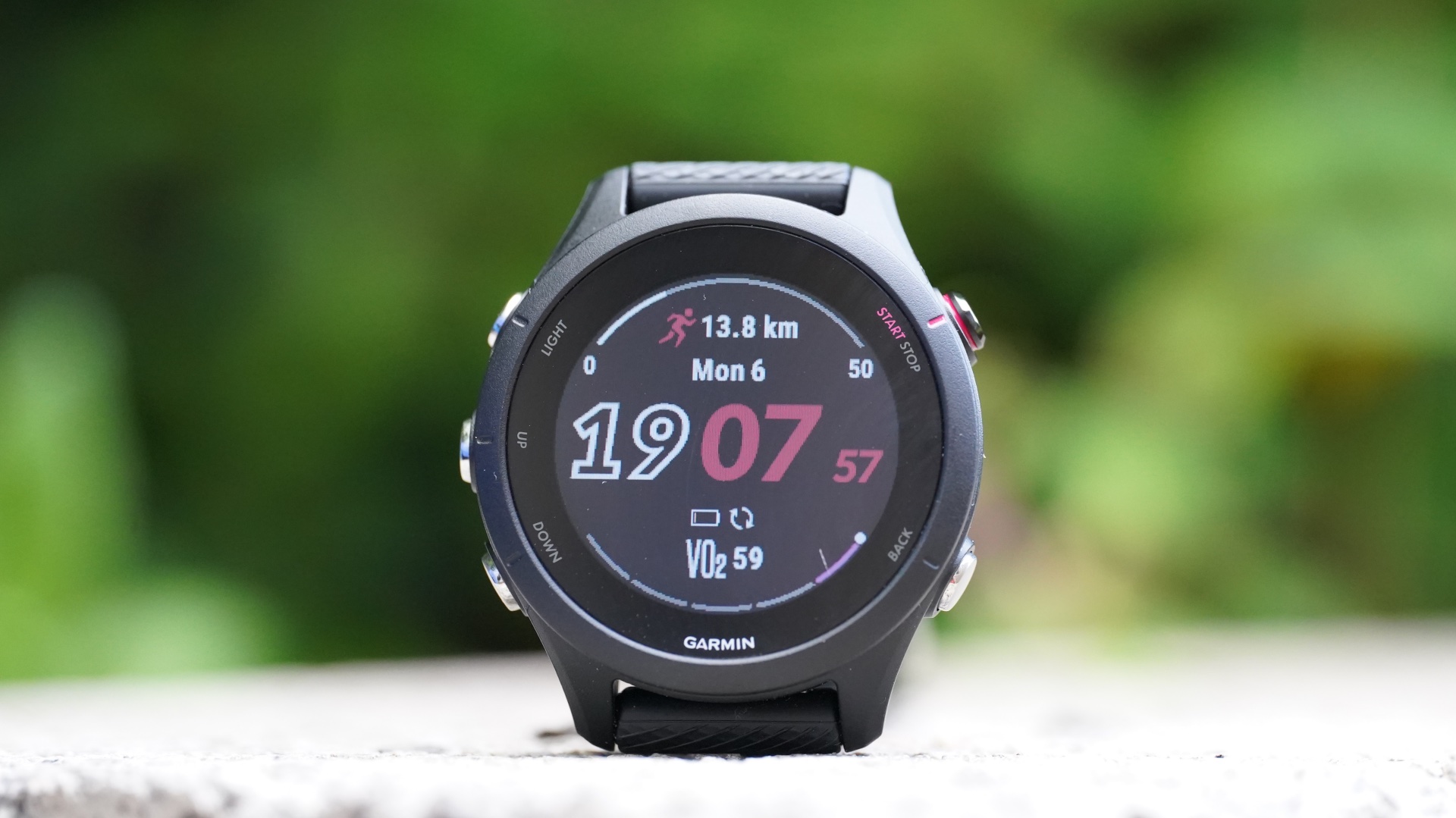
Garmin Forerunner 255S review: Battery life
As for battery life, it might be easier to compare things if I added another table:
| Row 0 - Cell 0 | Garmin Forerunner 255 Music | Garmin Forerunner 255S Music |
| Smartwatch mode | 14 days | 12 days |
| GPS-only GNSS mode | 30 hours | 26 hours |
| All-Systems GNSS mode with music | 5.5 hours | 5.5 hours |
| All-Systems GNSS mode | 25 hours | 20 hours |
| All-Systems GNSS mode plus Multi-Band | 16 hours | 13 hours |
Both are improvements over the Forerunner 245, which has a 7-day battery life in smartwatch mode and 24 hours in GPS mode.
[Please note that the Forerunner 245 didn't have multi-band GNSS support.]
Increasing the backlight will significantly reduce battery life (as I found out), but it's music listening while using the GPS that kills the battery instantly. The price you have to pay to have accurate GPS without the phone!
I'm not super keen on listening to music while I run – as much as I love running headphones – so that helped me save battery life overall. That said, other wearables with huge AMOLED displays and dual-band GNSS support (Huawei Watch GT Runner) have 14-day battery life in smartwatch mode... go figure.

Garmin Forerunner 255S review: Features
The Garmin Forerunner 255S comes with all the smart, health and fitness features under the sun, including all the features of the Forerunner 245. These include 24/7 heart rate tracking, sleep tracking, stress tracking, VO2 max estimations, training status reports, smart notifications, weather reports, quadrillion sports modes – including the new triathlon mode – step counter, blood oxygen measurements, Body Battery... the list goes on forever.
Of the new features, heart rate variability (HRV) is probably the most exciting. It takes roughly three weeks for the Forerunner 255S to establish a HRV baseline, but you'll get HRV updates as soon as you start wearing the watch for sleeping – which won't be too hard as it's super compact, so it won't bother you.
HRV is the time difference between each heartbeat when you sleep, and all you have to know about it is that the higher the number, the better. HRV declines as you age, but exercise can help keep it at a reasonable level. A steady sleep routine is also helpful.
The morning report is a cute feature and one that I didn't expect – maybe that's why I enjoy it so much. Each morning, the watch gives you an overview of your sleep, HRV and lets you know what weather and workout it recommends. It's a fun thing to wake up to, that's all.
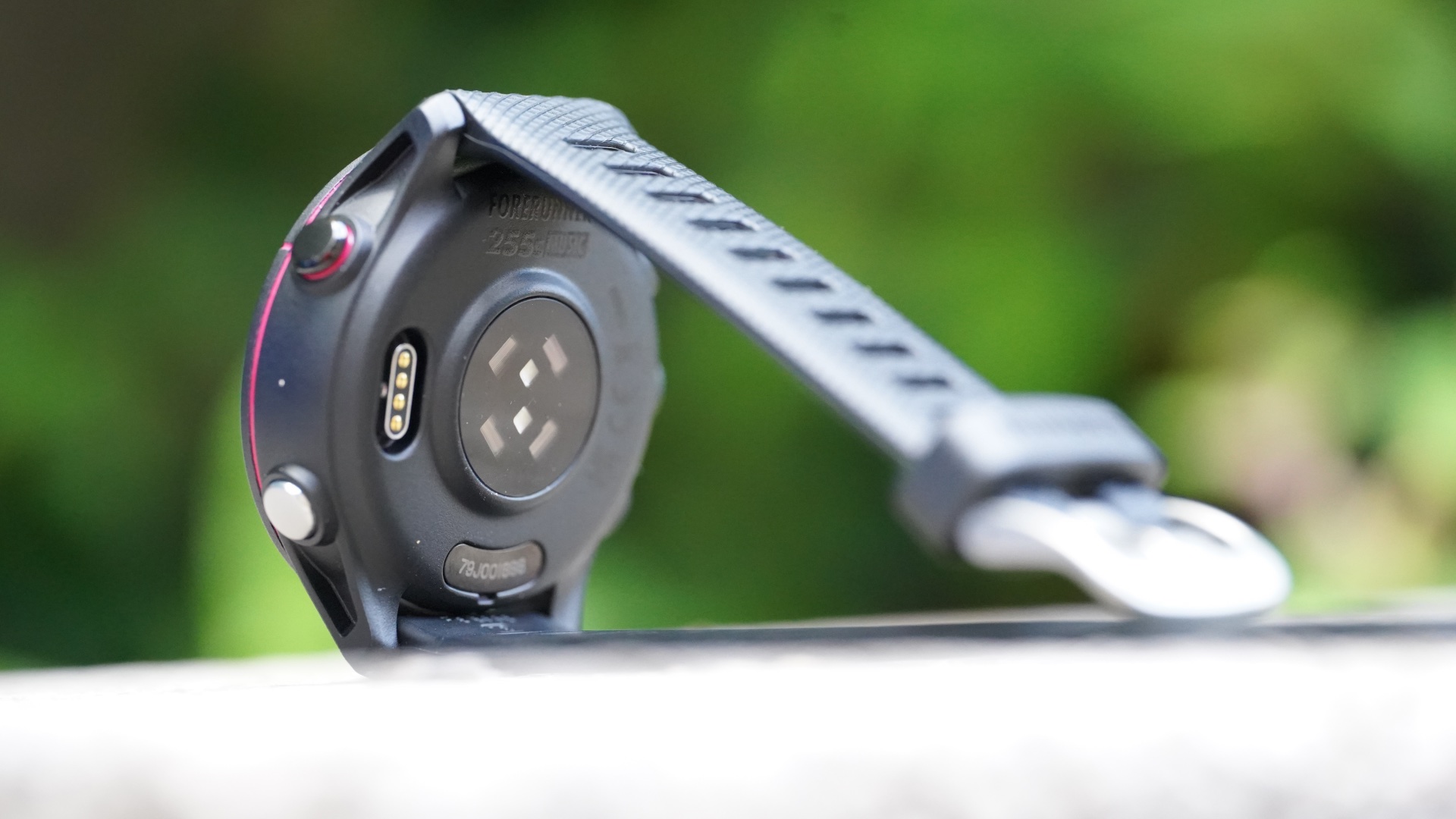
Garmin Forerunner 255S review: Heart rate sensor accuracy
What can I say? I have been a big fan of the new Elevate heart rate sensor since I tried it in the Garmin Venu 2. Since then, I found all new Garmin watches to be pretty accurate in terms of heart rate accuracy.
That said, you have to factor in that the Forerunner 255S is a wrist wearable, and as advanced as they get, optical heart rate sensors (and their algorithms) will always have to cut some corners. To ensure they show everyone decent heart rate results, they won't show anyone the perfect results, if that makes sense.
The algorithm will smooth things out as it has to work around different skin tones, hair on the wrist, etc. Also, running watches will always work best for tracking endurance-type activities – running and cycling – as opposed to HIIT workouts (quick spikes in heart rate).
However, they are getting better at keeping up with changes in heart rate, and the Garmin Forerunner 255S is as close as it gets to lab results right now (especially when you combine the watch with the HRM-Pro strap).

Garmin Forerunner 255S review: GPS accuracy
GPS accuracy is... okay. I tested the watch alongside the Forerunner 955 Solar and the Garmin Fenix 7X. I noticed that the Forerunner 255S almost always marks the first kilometre ahead of the other two watches, then falls behind after the second.
When I say start falling behind, I mean it buzzes after the two but is generally in the same ballpark. Of the two watches (Forerunner 255S and Forerunner 955), the Forerunner 955 performed closer to the Fenix 7X regarding GPS tracking.
But considering how small the watch case of the Forerunner 255S is, I would have been majorly surprised if it was as accurate as the top-tier Forerunner.
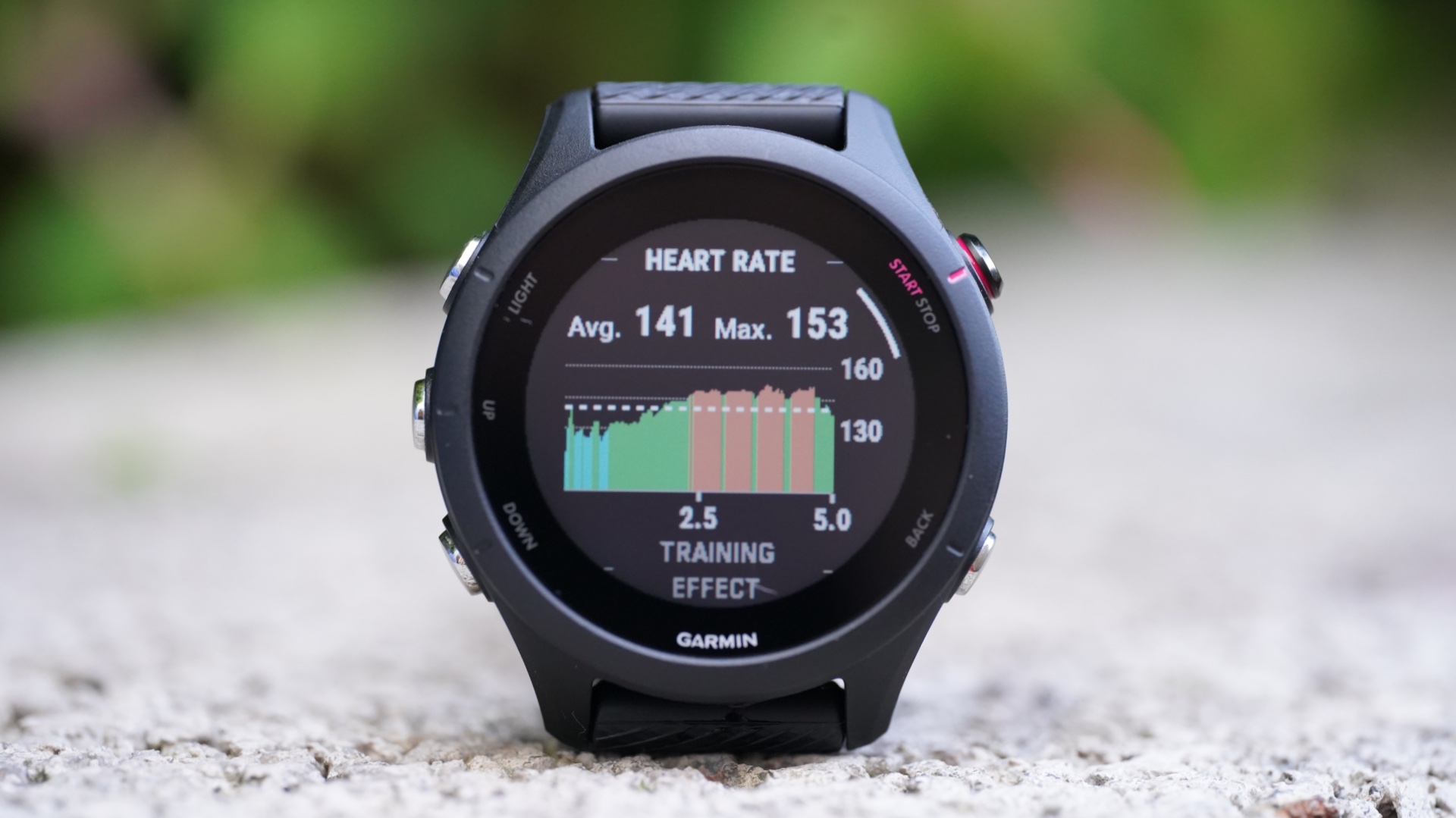
Garmin Forerunner 255S review: Workout performance
The Garmin Forerunner 255S has built-in GPS and an optical heart rate sensor plus a bunch of other sensors (e.g. accelerometer), so it can be used for any type of workout. With the addition of the triathlon sports mode, the watch is not just a running watch anymore – it's a full-fledged multisport watch.
As small as the display is, you can have six data fields on one screen as you work out, which is crazy. Granted, these data fields aren't going to be big, but the fact you can customise the layout and have up to six fields is impressive.
The watch has no touchscreen, and even if it did, Garmin would probably disable touchscreen operation during workouts.
If you have ever used a Garmin watch before, you'll be glad to hear the Forerunner 255S works exactly the same way as other Forerunners. Check the workout settings before you start tour workouts to ensure all features you need are turned on and that the GPS settings are also how you want them to be.
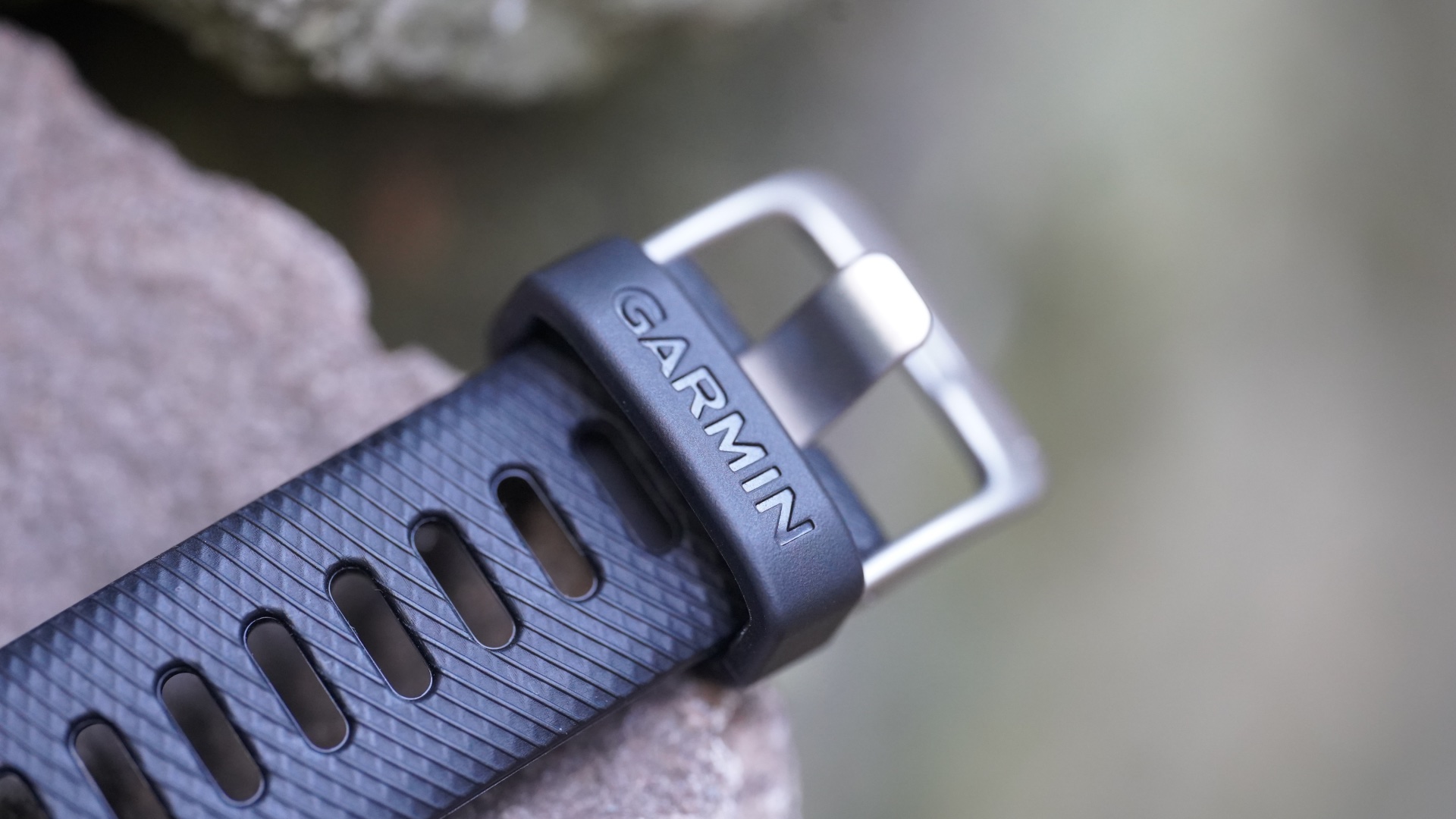
Garmin Forerunner 255S review: Verdict
The Garmin Forerunner 255S is the smallest Forerunner to date, yet it offers more functionality than most running watches. In fact, we can't call the Forerunner 255S just a running watch anymore – thanks to the addition of the triathlon sports mode, it's now a full-fledged triathlon watch. And the smallest of those, too.
Among all the new features, heart rate variability stands out; it adds another layer to the extensive recovery and training features already included on the Forerunner 255S. Not to mention the Race Widget and the triathlon mode mentioned above; the Forerunner 255S is a tiny but indeed mighty wearable.
The best thing about the watch, though, is that it enables people with small wrists to have access to pro workout features without any compromises. You can train like a pro using a small watch and a heart rate monitor – and that's worth the hefty price tag.
Garmin Forerunner 255S review: Also consider
Not sure what the future holds for the Garmin Forerunner 745, Garmin's dedicated triathlon watch. It's more expensive than the Forerunner 255 and has an older heart rate sensor/GPS chip, so I wonder who would choose it over the new watch. But it has some nice colour options so there is that.
Beginner runners might be better off with the Garmin Forerunner 55. It might not have the new GPS chip and the screen looks dumber but it has Garmin Coach, PacePro and even swimming metrics. And you can get it for less than half the price of the Forerunner 255S.
You can find two more options in this article about the best Garmin Forerunner 255 alternatives.

Matt Kollat is a journalist and content creator who works for T3.com and its magazine counterpart as an Active Editor. His areas of expertise include wearables, drones, fitness equipment, nutrition and outdoor gear. He joined T3 in 2019. His byline appears in several publications, including Techradar and Fit&Well, and more. Matt also collaborated with other content creators (e.g. Garage Gym Reviews) and judged many awards, such as the European Specialist Sports Nutrition Alliance's ESSNawards. When he isn't working out, running or cycling, you'll find him roaming the countryside and trying out new podcasting and content creation equipment.